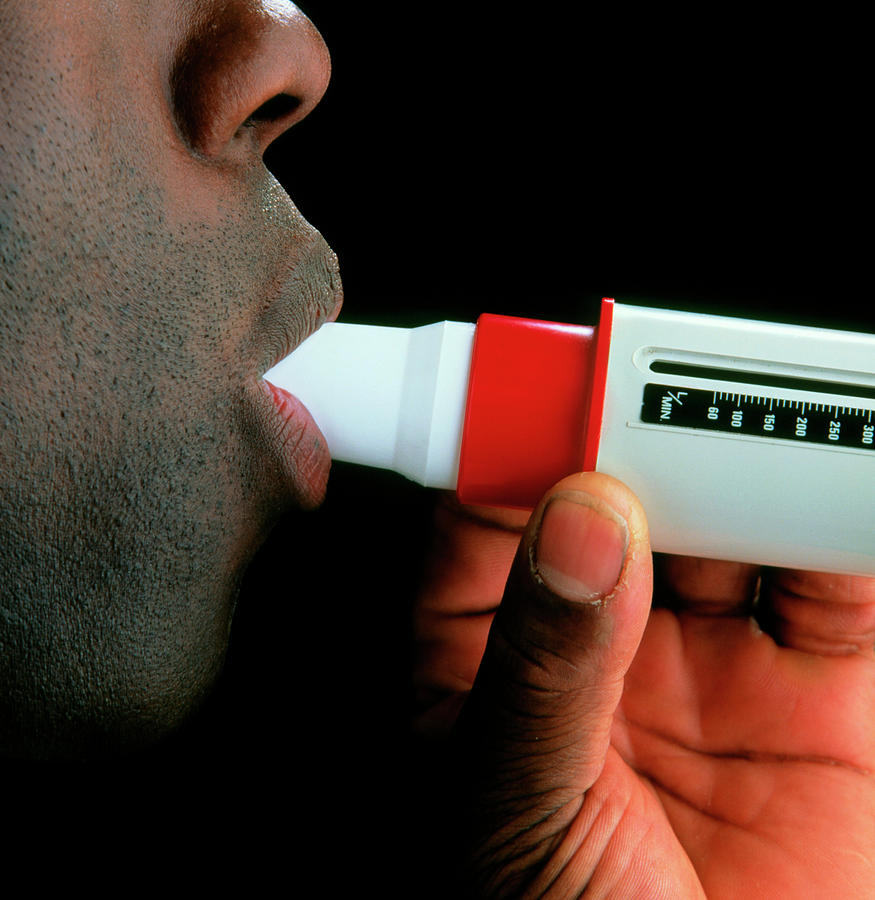
For predicting confirmed clinical diagnosis of healthy and airway obstruction (asthma/COPD) sensitivity and specificity of standard spirometry and PFM were 83% and 70% and 80% and 85% with cut-offs of 0. Results: Compared to standard spirometry, PFM had sensitivities of 91% and 75% and specificities of 77% and 91% at cut-offs of 80% predicted and 75% predicted respectively to detect airflow limitation. Sensitivity and specificity of peak flow meter to detect airway obstruction were studied against spirometry and final clinical diagnosis and cut-off for %predicted was obtained by receiver operating characteristic analysis. Methods: PEF measurement (Breathometer, Cipla ltd.) and spirometry (Koko) were conducted in 111 subjects (asthma=69, COPD=18, healthy=24) by a well trained technician. Peak expiratory flow rate (PEFR) provides an objective clinical.

The ability of PFM to detect airway obstruction compared to standard spirometer is inadequately studied. Assess Peak Flow Meter Measure airway obstruction easily, accurately, and cost-effectively. Your peak flow meter is only an aide to you, so do not rely on your peak flow numbers alone when deciding whether to take your rescue medicine or call your doctor.Background: Peak flow meter (PFM) is a screening tool for asthma and COPD. If you have an Asthma Action Plan from your doctor, follow the plan for each peak flow zone, and compare your peak flow numbers to your personal best. Take your peak flow meter and your asthma health diary with you each time you visit with your doctor or nurse. Reporting Peak Flow Numbers to Your Doctor Check your peak flow before taking the rescue medicine, then check it again 20-30 minutes later. When you need to use "rescue medicine": This is medicine prescribed by your doctor to be used for quick relief of asthma symptoms. When you are doing well: Use the peak flow meter two times during the week and once on the weekend.īegin to wake at night with asthma symptomsĬheck your peak flow number at least twice a day (once in the morning and once in the evening) When the numbers do not change much from time to time: The peak flow number should be checked once a day (ideally in the morning when you wake up). Record this number on your peak flow diary or on a graph. Select the highest number of the 3 efforts. Place the mouthpiece in your mouth and seal your lips around it.īlow out as hard and fast as you can (one quick blow). Slide the indicator to the base of the meter. Grab your peak flow recording sheet or health diary and a pen and record the date and time, along with any changes in how you feel, changes in your medicines, and/or anything you think may be making your asthma worse.
PEAK FLOW METER HOW TO
Here's how to regularly measure your expiratory flow: Establish one central place to do this so you can more easily keep track of your numbers, such as in a peak flow sheet or Asthma Health Diary.

Whenever you measure your flow, it is a good idea to write your peak flow numbers in a place where you can track them. If your peak flow is less than 60% consider this an emergency: Take your rescue medicine, and call your doctor or go to the emergency room right away.

Call your doctor if you continue to need rescue medicine If your peak flow is back above 80%, recheck your peak flow about every 4 hours for a day or so. If your peak flow is not back above 80%, report this to your doctor. If your peak flow is less than 80% of your personal best, you take your rescue medication, then wait 20 to 30 minutes and check your peak flow again. You establish your personal best by recording the peak flow values for two weeks first thing in the morning before taking any medications and late afternoon when your asthma is under control. Once you know you personal best, you and your doctor establish treatment rules or "zones.". This helps you see when you have changes with your asthma, because it gives you something to measure against. You use the peak flow meter to help you identify lung performance patterns, which give you information to prevent asthma episodes and develop your asthma management plan.įirst, you establish your "personal best," or the highest number you regularly blow.

It does this by measuring your peak expiratory flow, which tells you how fast you can blow out air after a maximum inhalation. A peak flow meter is a small, easy-to-use instrument that reveals how well your lungs are working.


 0 kommentar(er)
0 kommentar(er)
